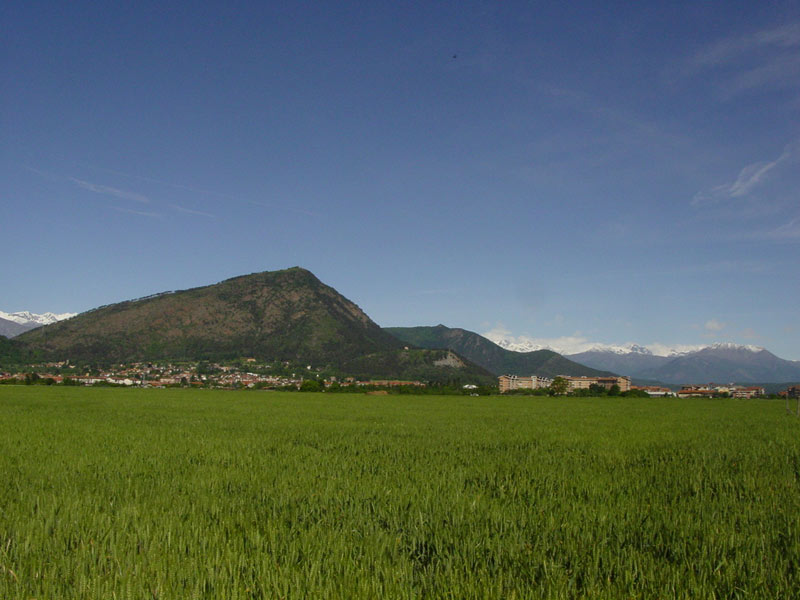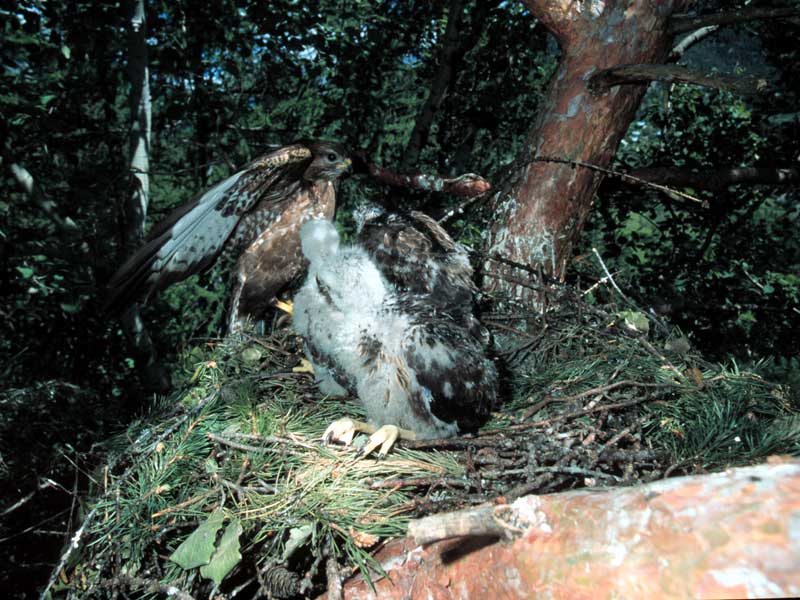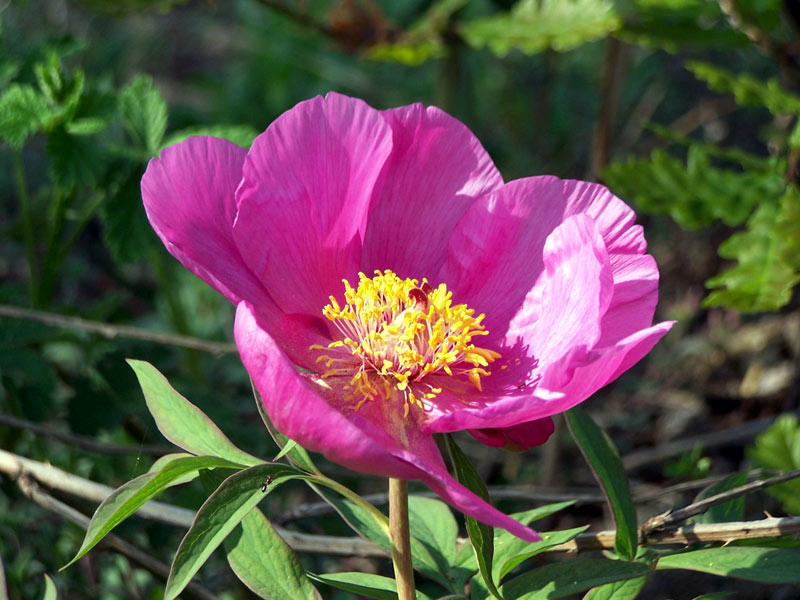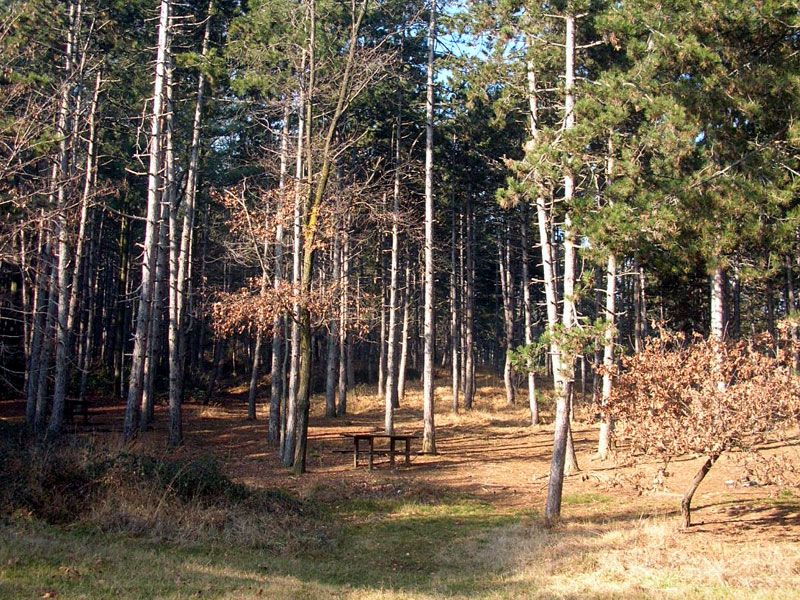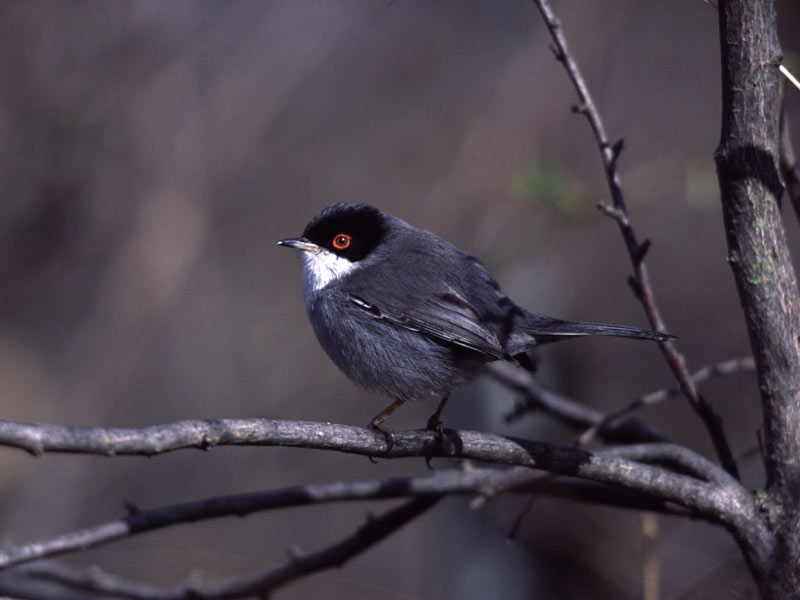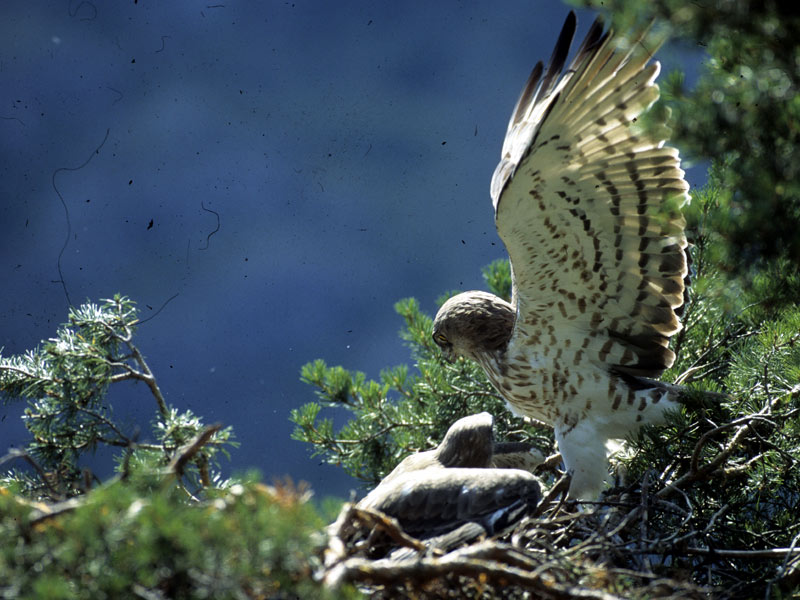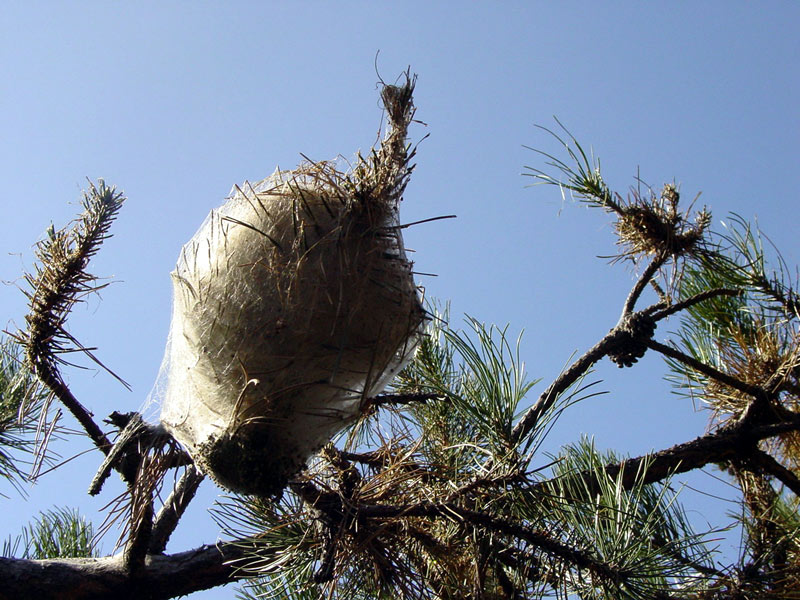Protected Area
Identity Card
- Land Surface Area: 388.00 ha
- Lower altitude (m): 330
- Higher altitude (m): 837
- Regions: Piemonte
- Provinces: Torino
- Municipalities: Piossasco
- Establishment Measures: LR 19 29/06/2009
- PA Official List: EUAP0886
- Park Authority: Città Metropolitana di Torino
Territory
The Park, entirely lying in the territory of the town of Piossasco, covers about 377 hectares between the 300 and 837 meters of Mt. San Giorgio, representing the closest spur of the alpine chain to the plain of Turin. The Park flora includes 434 species, some of which are very interesting for their rarity or for their particular distribution features, like Cheilanthes marantae, a xerophilous fern with a fragmented distribution or Paeonia officinalis, a wonderful and rare species at a national level. As far as fauna is concerned, many important birds can be found in the Park: among them, eco-geographical rarities like Sylvia melanocephala, or Sardinian Warbler and Circaetus gallicus, the Short-toed Eagle. Moreover, there is a considerable variety of carabids from the Coleoptera order, considered important as ecological indicators.
Monte San Giorgio Nature Park of Provincial Interest
The area of Mt. San Giorgio is of particular landscape interest, since
it lies close to the plain (316 - 836 meters above sea level), and
forms a natural balcony where you can enjoy surprising views over great
part of the western Alps and the underneath agricultural plain. It
houses a very interesting vegetation linked to the particular climatic
conditions: the slopes are dominated by Downy Oak, and sometimes you
can find Ilex and Hop Hornbeam, while the Olive tree, cultivated here
since ancient times, exceptionally reaches its ripening stage.
The
planting of fast-growing conifers began in the 20s and went on until
the 70s; it now covers wide areas. The fauna is of particular interest,
in particular as far as carbids are concerned; 59 bird species have
been recorded: among them, the presence of some birds of prey is of
particular interest (Northern Goshawk, Kestrel, Buzzard).
The
favorable climatic conditions characterizing the slopes of Mt. San
Giorgio have been promoting human settlement since ancient times; the
first finds date back to the 8th century BC, the most important ones
date back to the Roman Age. The ridge going from the summit southwards
houses the most important historical settlements: the ruins of Gran
Merlone Castle date back to the Lombard epoch; another Castle began in
the 16th century was never completed; Nove Merli Castle is still
inhabited. These Castles were part of a complex fortified system: today
only traces of the walls remain, which included in the lower part two
defensive complexes.
The Chapel dedicated to San Giorgio is of
particular interest: it was built around the year 1000 by the
Benedictine Friars on the summit, at 837m; near the Park area there
are several evidences of historical and artistic/architectural
relevance; the town of Piossasco (Bourgià) preserves the ancient urban
structure consisting of rural buildings, mills, chapels, villas
surrounded by parks; the Church of San Vito with its Monastery
preserves the ancient Roman structure, with the apse in the lower part
of the bell tower. The interior is decorated with 15th century frescoes
and 18th century paintings.
Flora and Vegetation
Mt. San Giorgio houses a very interesting vegetation linked to the particular climatic conditions: it includes 434 species, some of which rare and others important for their particular distribution features. Here is a list of some of the most interesting species of the area:
- Cheilanthes marantae - xerophilous fern rare in Italy and Piedmont, where it lives on dry cliffs and prealpine walls
- Adiantum capillus-veneris - thermophile and hygrophilous fern, rare in Piedmont
- Asplenium cuneifolium - localized in the northern Po Plain; rare according to Pignatti
- Paeonia officinalis - wonderful species rare both at a national and local level
- Pulsatilla halleri - species with steppe-like features, endemic of the Alps from Lombardy to Piedmont; very rare according to Pignatti
- Isatis tintoria - interesting relict of ancient dying cultivations
- Alyssum argenteum - endemic species of the western Alps
- Rosa inodora - species growing in the Alps and in the Apennines, rare according to Pignatti
- Dictamnus albus - wonderful protected species
- Lonicera etrusca - its stations on Mt. San Giorgio are among the few stations known in Piedmont
- Festuca paniculata - the summit station of Mt. San Giorgio is one of the few low-altitude stations in Piedmont
- Phleum phleoides - rare species at a national level
- Quercus ilex, Olea europaea and other Mediterranean species represent the most interesting floristic features of the area, witnessing the mildness of the winter climate.
The forest covering is the dominating aspect
characterizing the Mountain landscape and ecosystem and represents one
of the main interesting element both as far as landscape and tourism
are concerned.
The vegetation covering vast areas has artificial
origins: the planting of fast-growing conifers began in the 20s and
went on until the 70s, above all on the slopes with a south-western and
western exposure. On the southern slope, for climatic and environmental
reasons, there are important areas covered by xeric grassland, more or
less scattered with arboreal specimens of Black Pine (artificially
introduced and seriously damaged by a devastating fire in February
1999), Sessile Oak and Downy Oak; sometimes they grow together with
Ilex and Hop Hornbeam, while the Olive Tree, cultivated since ancient
times, exceptionally reaches its ripening stage. Areas covered with
Black Locust characterize terraced slopes once covered with vineyards.
The highest altitudes of the northern mountain slopes are dominated by
coppice Sessile Oak woods, sometimes irregularly mixing with chestnut
trees and other broadleaf trees.
Fauna
Mt. San Giorgio has all the requirements to be an area of considerable naturalistic and zoological interest, even if the research activities carried out in the area are few, and the published data are even less.
The Park's distinctive features are:
- presence of a considerable number of nesting species, if we consider the limited size of the area;
- contemporaneous presence of species with very different ecological needs (alpine and Mediterranean species growing together);
- presence of different rare species or species that are not very common at a regional level.
Among the species living in the Park, we mention:
- Orphean Warbler (Sylvia hortensis): migratory species belonging to the Sylviidae family. About 15 cm long, with dark brown-gray feathers and whitish underparts. It lays 3-5 eggs between the end of April and the end of June and feeds on invertebrates and berries. The Orphean Warbler nests in warm and dry areas and also lives in orchards and olive groves. Its singing is a gentle warbling.
- Sardinian Warbler (Sylvia melanocephala): passerine bird belonging to the Sylviidae family. About 14 cm long, with a gray-black plumage in its upper parts and white-reddish plumage in the underparts. It often lives in the low-trunk trees areas and does not migrate. It lays 4-5 eggs with a white or green eggshell scattered with brown and bluish dots. It feeds on insects.
- Peregrine (Falco peregrinus): it belongs to the Falconidae family. It has a wingspan of about 95 - 110 cm, is 36-48 cm long and it can fly with a speed of over 200 km/h. Its upper parts are characterized by a grey-blue plumage and its underparts by a pale beige with dark and thin transversal stripes. It has all the typical features of birds of prey, like hooked beak, strong legs, and sharp talons. It is a rather noisy bird, since it often gives out loud cries. It has a powerful and fast flight. It nests in small cavities on the cliffs, inaccessible to predators. It lays 2-6 eggs between the end of February and the beginning of April.
- Short-toed Eagle (Circaetus gallicus): rare species belonging to the Accipitridae family, with large and fringed wings. It almost exclusively feeds on snakes. 62-67 cm long, with a wingspan of 185-195 cm. The upper parts go from light brown to dark brown, while its underparts are white with more or less evident stripes both on the body and on the wings. It builds a big nest where it usually lays only one egg.
The woodlands of Mt. San Giorgio are characterized by the presence of important invertebrates: the carabids, a Coleoptera family, stand out with Carabus coriaceus. In the Park it is possible to find the tracks of the Wild Boar (Sus scrofa): it feeds on roots, acorns, and other plants, but also on insects and small animals.
The Black Pine woodlands of Mt. San Giorgio suffer from attacks by the Pine Processionary moth (Traumatocampa pityocampa): the larvae of this lepidopteran feed on conifer needles, causing defoliations and making the plants vulnerable to other pathologies. During the winter, processionary moths build a compact nest at the top of the trunk or of the branches, where they take shelter during the coldest months. When they become mature, from the end of February to the beginning of April, they definitively abandon the nests and reach the soil in single files, forming real processions, to go underground in the sunniest and warmest places up to 20 cm of depth: here they create a cocoon where they transform into butterflies. It is recommended not to disturb processions and not to touch the caterpillars, since they have microhair on their back that can cause epidermal or allergic reactions.
The Geology of Monte San Giorgio
Mt. San Giorgio and part of the mountains on its western side represent the southernmost spur of Lanzo Ultrabasic Massif, stretching forward in the north beyond Stura di Lanzo in the area of Balangero. This Massif is formed by lherzolites (olivine peridotite and pyroxenes), partly transformed into serpentinite by the alpine metamorphism; peridotite represent portions of the upper mantle, outcropping during the alpine tectogenesis. These ultrabasic formations are associated with other metamorphic rocks (prasinite) deriving from the transformation of the ocean crust. In Lanzo Massif, the above-mentioned rocks also associate with green rocks: they are rocks resisting to alteration and giving origin to steep slopes, rocky outcrops, and harsh mountains. The soils, which are not very developed because of the nature of the underlying rocks, have been further degraded by human activities favoring grazing to the detriment of the woodlands. These soils are very poor and, except for the areas still covered with woodlands, they have been ruined by meteoric waters which deprived them from the humus horizon. This horizon, when it exists, directly lies on ancient deep B-type horizons, rich in silt and clay, rather compact and heavy, with a characteristic reddish color given by the presence of iron oxide and sub-acid pH.


